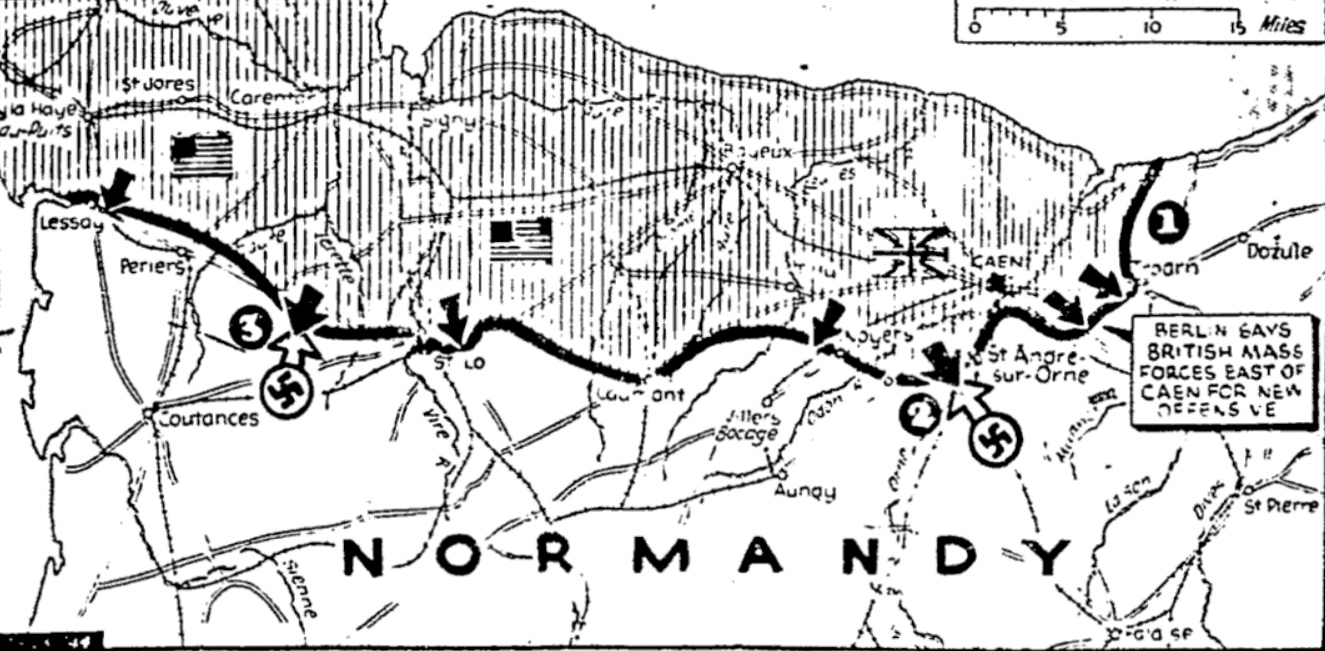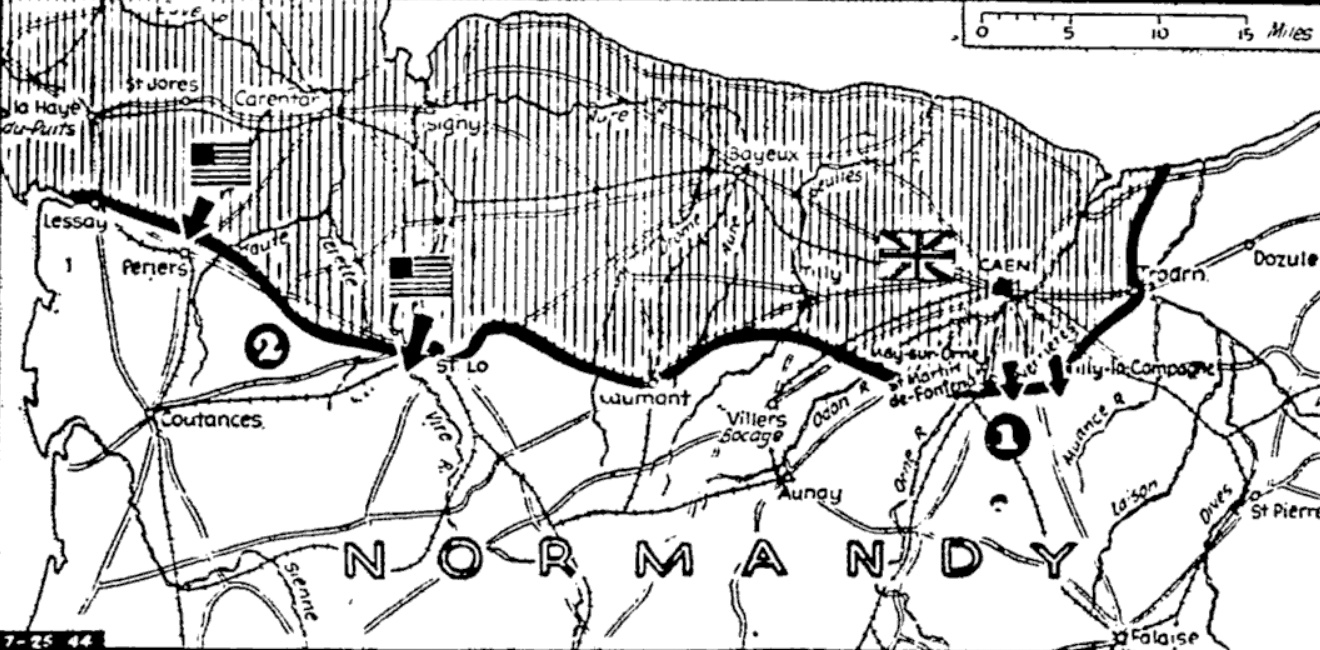Background of news –
Heavy bombers support troops in Normandy
By E. C. Shepherd
London, England –
The effectiveness of close support by intense heavy bombing gives fresh significance to Gen. Sir Bernard L. Montgomery’s dictum that the air battle must be won before the land battle can begin.
Close support of heavy bombers helped to admit the Allied forces into Caen and, intensified, has helped the Allies to break out of Caen to the open ground to the south. The 1,000 heavy RAF bombers that opened the bombardment at dawn on July 18 encountered no fighter opposition, nor did most of the bombers during the morning.
The Germans had 500 or 600 fighters within range of the fighting. They have of late sent them out on patrol in packs of 40 and 50 but have generally avoided combat. If they still refuse battle, the Germans must expect to see their troops driven from one defensive position after another by such a bombardment as no artillery concentration has yet been able to produce.
If the Luftwaffe accepts the challenge and seeks to protect its troops from the heavy bombers next time, it can heave no guarantee that its fighter force will not be reduced to impotence. The Americans have learned in brilliant operations over Germany how to guard heavy bombers from fighter attacks and the RAF has been taking tips from them on the best method of employing fighter escorts for heavy bombers.
The Germans seem to have underestimated the possible power of close support by heavy bombers. Apparently, they expected the main close support to be given the Allied troops by their fighter-bombers.
Planes pave way for troops
The Allied air arm has been brought in to pry the German troops from their prepared positions and open the way from the Allies’ mobile land forces. This weighty form of close support came, not from local bases, but from stations in Britain against which the German Army can do nothing.
Apart from anti-aircraft fire, air defense of the orthodox kind is the only answer to this massive development in close support. The Germans, lacking adequate fighter defense, must expect it to continue.
We are entitled even at this early stage to doubt their ability to defeat or seriously, modify it. We can expect the big bomber radically to change the nature of battles, being justified in regarding it as suitable for use in close support of troops wherever air superiority has been established. It is usable with such a devastating effect in breaking defensive positions that it is likely to become an essential part of the barrage which usually opens an attack.
Two of the chief purposes which heavy bombers have thus far served far exceed the original idea of making troops “keep their heads down” while tanks and infantry go forward. Already the close support of heavy bombers has been scientifically directed to breaking the enemy’s strongest points and obstructing roads along which help might be brought to his forward positions.
New bombing technique
By bringing the whole technique of precision night bombing to this task Britain’s heavy bombers have made heavy and close support possible. They have been able to take on targets on the battlefield without endangering the lives of the adjacent British troops.
They have introduced a bombing method whereby an enormous weight of explosives can be put down on prescribed objectives in a short time without having to send over bombers in close formations which give flak its best chance. They have armed themselves by using bright-burning ground flares as target indicators with a means of identifying targets through smoke and dust.
In the dawn attack which opened the battle south of Caen, Britain’s heavy bombers sent down 5,000 tons of bombs in 40 minutes on targets nominated by the Army. No other means could have accomplished this.

